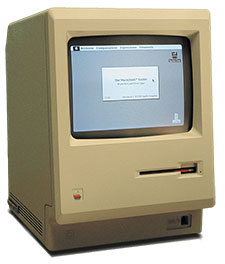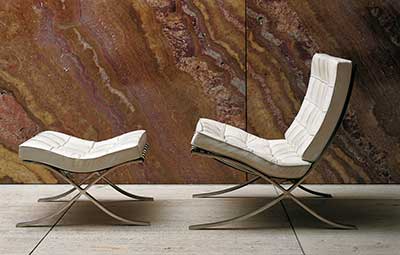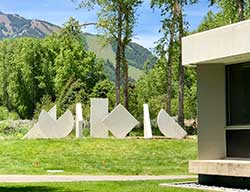Steve Jobs and the Bauhaus.
Excitement was in the air as people crowded into the Moscone Center on January 24, 1984, to witness one of the most hyped product introductions of all time. Two days before, a Super Bowl ad had shown a darkened room full of zombie-like people sitting slack-jawed as a revolutionary new device and its liberating possibilities were revealed to them, but not the viewers. Now the secret was to be disclosed to the world. Anticipation was great, but it’s only with the benefit of hindsight that we can truly appreciate the tectonic shift that was about to occur as Steve Jobs walked onto the stage to introduce the Macintosh.2
Designed to Be Insanely Great. Back then few people had computers at work. Most thought of them as room-sized behemoths that spat out reams of paper. Even the latest personal computers were clunky boxes where coded instructions were typed on a keyboard and text responses were printed or displayed as green or orange letters on a black screen. Sound complicated? The IT priesthood liked it that way since it made mastery of their systems a sign of manliness, even for the few women who managed to sneak into the inner sanctum.

Jobs was one of the visionaries who thought that personal computers could become as commonplace as telephones. But he realized that could only happen if they were as easy to use as telephones.3 And if they looked great, so much the better.
The Macintosh forever changed the popular notion of what a computer could do. Jobs wanted it to be “insanely great.” Graphics and sound capabilities were built in. Every unit could be networked. And the system was operated by point and click menus, not function keys and typed commands like the others. The idea, probably never realized, was that the interface would be self-explanatory. A pirate flag flew outside the building where the Macintosh team worked as a symbol of their renegade status.
These seemed like revolutionary ideas in 1984, but many of the underlying principles had been pioneered half a world and more than half a century away at the Bauhaus.
The Bauhaus. The Bauhaus was as radical for its time as the Macintosh. It was a school of art and design established in Weimar, Germany in 1919. The name literally means house of building and its mission was to design practical objects that were beautiful and easy to use. Its last director, Mies van der Rohe, popularized the expression “less is more.” The school’s free-thinking approach made it a target of the National Socialists and it was closed when Hitler came to power in 1933. Its legacy survived, however, as its teachers and students continued their work outside Germany. Many consider the Bauhaus to be the most influential design institution of the twentieth century.

Although it is probably best remembered today for its architecture, Bauhaus masters designed everything from furniture and fabrics to typefaces and table settings. They also did painting and photography, in fact one of their goals was to erase the boundaries between the fine and practical arts and instead focus on the total product, everything from its essential functionality to its appearance and ease of use. Many Bauhaus designs are still in production and appear as fresh to us today as they did when they were created nearly a century ago.
Steve Jobs Meets the Bauhaus. Jobs grew up in a world built on Bauhaus principles. His family’s house, the one with the garage where Apple was born, reflected Bauhaus principles of simple, clean design at an affordable price. After he dropped out of college, Jobs continued to audit classes on typography. Simple, clean typefaces were a hallmark of the Bauhaus look.
Apple’s earliest computers did not reflect Bauhaus style, but rather followed what Jobs called Sony design, heavy boxes that looked “technical.” Apple’s first office shared space in a building with Sony and Jobs frequently visited Sony’s offices to look at their product brochures.

Then in 1981, Jobs attended a design conference at the Aspen Institute. Its campus, furniture, living quarters and even the typography were designed by Bauhaus architect Herbert Bayer. Jobs realized this was the look that would let him fulfill his goal of selling computers that not only made people more productive, but beautified their environment as well.
Speaking two years later at the same Aspen conference, Jobs noted that “[i]f you’ve looked at computers, they look like garbage,” and continued how Apple would sell 10 million by 1986, “whether they look like a piece of **** or they look great.” But, he noted, computers eventually would be in everyone’s workplace, school and home, and “we have a shot at putting a great object there.”
The Connections. Obviously, the products created by the Bauhaus and Apple are very different, but at their core they seem like soul mates. Somehow you just know that Bauhaus founder Walter Gropius would have chosen a Macintosh and iPhone if personal computers and smartphones had been available in his day.
One of the guiding principles of the Bauhaus was gesamtkunstwerk, which literally means total work of art. Jobs brought this principle to Apple’s design process. Most computers were designed by building circuit boards and then making a case that would fit. But the original Macintosh’s housing was designed by sculpting plaster with the goal of making the machine seem friendly. The circuits could be fitted inside later. The original iMac was given a translucent case so the components inside could be seen, thus connecting the aesthetics of the design to the technology within.
The Macintosh also made typography a readily available communication tool. Previously, only graphic designers and printers worked with fonts. But had always been central to Bauhaus designs. Jobs become obsessed with typography in college and included a library of fonts with the original Macintosh. Apart from making the electronic publishing industry possible, they also gave everyday writers the ability to choose a serious or playful font depending on the nature of their work.
* * * * *
Great ideas are timeless. Plato and Shakespeare speak to us with the same vitality as they did to their contemporaries. Steve Jobs’ adoption of Bauhaus principles to produce some of our own time’s iconic products reflects this tradition.
-----
- Video digitized from VCR recording made during broadcast of the 1984 Super Bowl. File posted on YouTube.
- Information for this article comes from Walter Isaacson, Steve Jobs, Simon & Schuster (2011); Walter Isaacson, “How Steve Jobs Love of Simplicity Fueled a Design Revolution,” Smithsonian Magazine (Sept. 2012); Abigail Cain, “What Steve Jobs Learned from the Bauhaus,” Artsy (Oct. 10, 2017); and Evgeny Morozov, “Form and Fortune,” The New Republic (March 15, 2012).
- Jobs illustrated this by comparing the telegraph and the telephone — messages traveled at the same speed on both, but only people who knew Morse Code could use a telegraph while anyone could speak through a telephone. Speaking to the Boston Computer Society, he noted that plans had once been made to put telegraph stations on people’s desk as a means of improving productivity, but they were abandoned as soon as the telephone was invented. Watch on YouTube.
- Image of original 128K Macintosh from Wikipedia.
- Mies van der Rohe’s Barcelona Chair. Image from the web site of the Fundació Mies van der Rohe.
- Bayer sculpture at Aspen Institute’s Colorado campus. Image from Aspen Institute web site.
This article originally appeared in our free semi-monthly newsletter. To receive future issues, please add your name to the subscription list.

